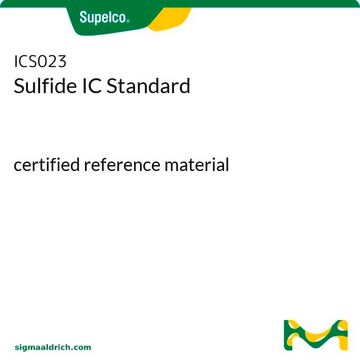About This Item
Recommended Products
form
solid
Quality Level
reaction suitability
reagent type: catalyst
core: sodium
mp
950 °C (lit.)
density
1.86 g/mL at 25 °C (lit.)
storage temp.
2-8°C
SMILES string
[Na]S[Na]
InChI
1S/2Na.S
InChI key
CXPWOVUZRAFMDA-UHFFFAOYSA-N
General description
Application
Features and Benefits
- Quality Guaranteed - Quality-tested to be 98% pure for consistent results.
- Available to scale up: bulk and pilot scale
signalword
Danger
Hazard Classifications
Acute Tox. 3 Dermal - Acute Tox. 3 Oral - Aquatic Acute 1 - Eye Dam. 1 - Met. Corr. 1 - Self-heat. 1 - Skin Corr. 1B
supp_hazards
Storage Class
4.2 - Pyrophoric and self-heating hazardous materials
wgk_germany
WGK 3
flash_point_f
Not applicable
flash_point_c
Not applicable
ppe
Eyeshields, Faceshields, Gloves, type P3 (EN 143) respirator cartridges
Choose from one of the most recent versions:
Certificates of Analysis (COA)
Don't see the Right Version?
If you require a particular version, you can look up a specific certificate by the Lot or Batch number.
Already Own This Product?
Find documentation for the products that you have recently purchased in the Document Library.
Customers Also Viewed
endothelial function in a canine model of cardiopulmonary
bypass
Articles
Noble-metal nanostructures find diverse applications from catalysis to biomedical research, leveraging surface properties in various fields.
Our team of scientists has experience in all areas of research including Life Science, Material Science, Chemical Synthesis, Chromatography, Analytical and many others.
Contact Technical Service





![1,8-Diazabicyclo[5.4.0]undec-7-ene 98%](/deepweb/assets/sigmaaldrich/product/structures/120/564/5b373e23-1624-489c-8efb-692de0f96ffb/640/5b373e23-1624-489c-8efb-692de0f96ffb.png)









